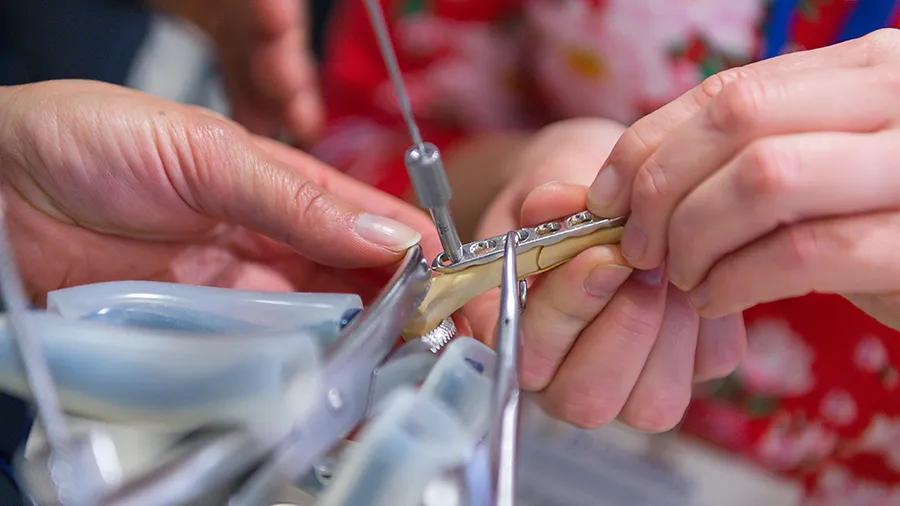Arthrodesis with plates
1. Principles/General considerations
Cervical stenotic myelopathy (CSM) is a developmental disorder, usually causing spinal ataxia in young horses. Cervical vertebral deformation leads to stenosis of the vertebral canal and spinal cord compression.
CSM is commonly diagnosed in foals and young horses between 6 months and 3 years of age and is more prevalent in male and Thoroughbred horses.
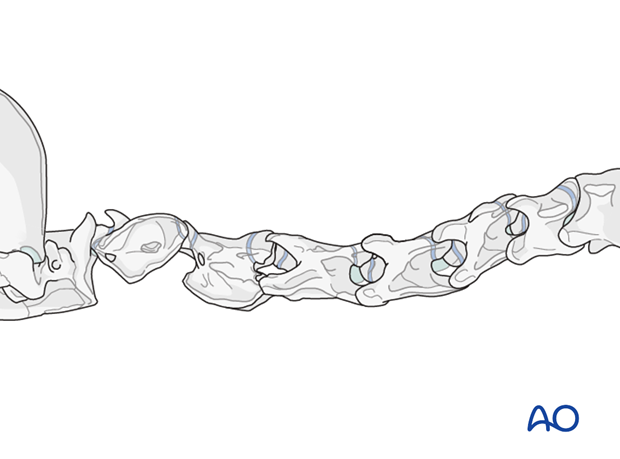
Depending on the localization of the instability, two or three vertebrae are fused.
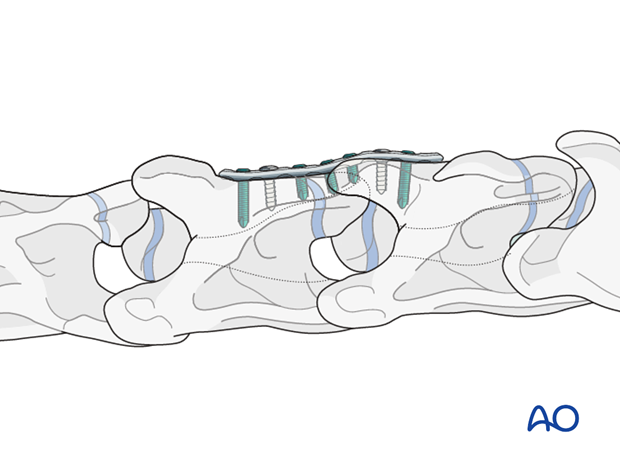
This decision is made based on the myelography images.
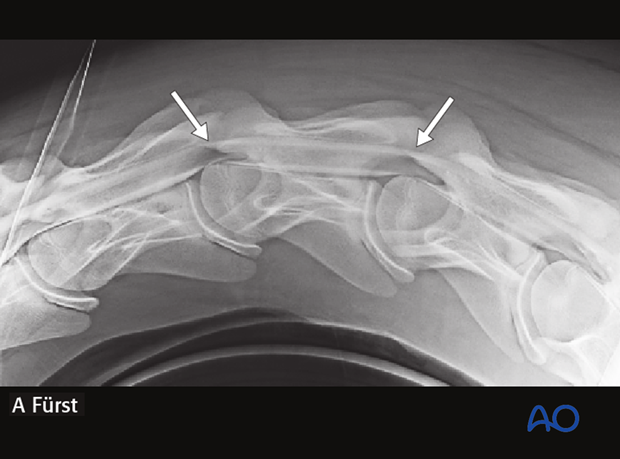
2. Preparation and approach
This procedure is performed with the patient positioned in dorsal recumbency through the ventral midline approach to the cervical spine.
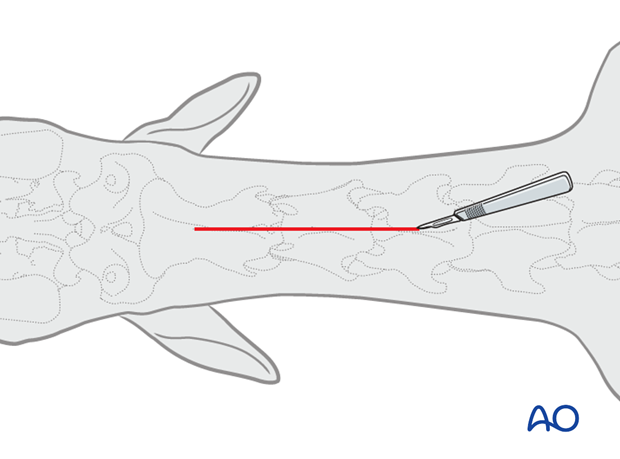
3. Realignment
Preparation of the bone
The ventral spinous process of the body of the affected vertebrae is flattened slightly using a curved osteotome and bone rongeur.
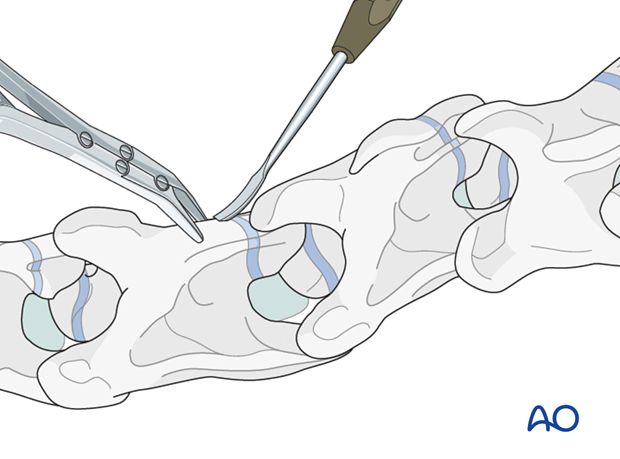
The disc material has to be removed, at least partially, with multiple parallel drill lines with a 5.5mm drill bit under radiographic guidance.
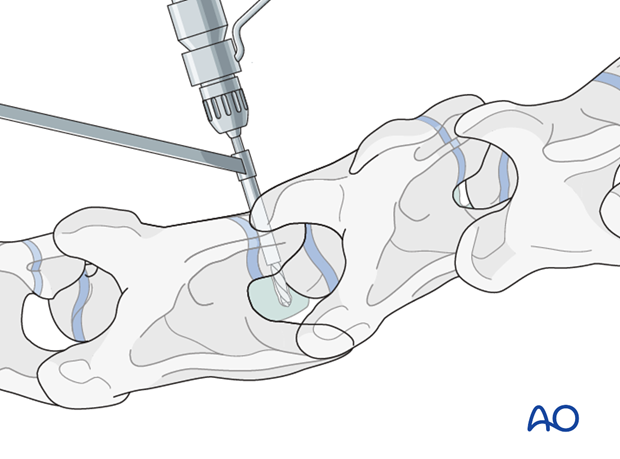
Realignment
After exposing the ventral surfaces of the affected vertebrae, the alignment is corrected and maintained with bone-holding forceps.
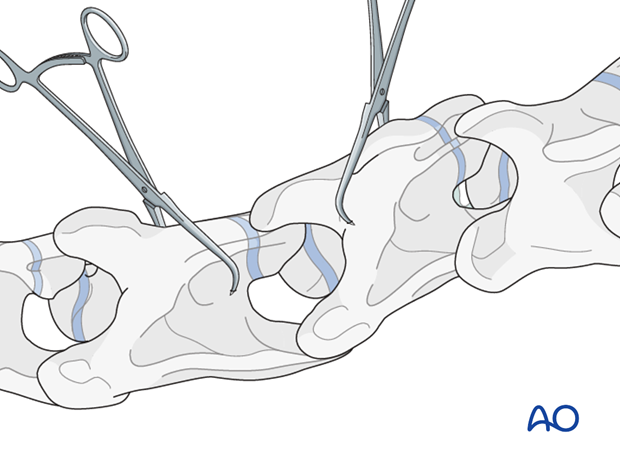
4. Fixation
Plate selection
Preferentially, the LCP is used for the fixation of the instability. According to the size of the patient, a small or broad 3.5/4.0 or 4.5/5.0mm LCP is used.
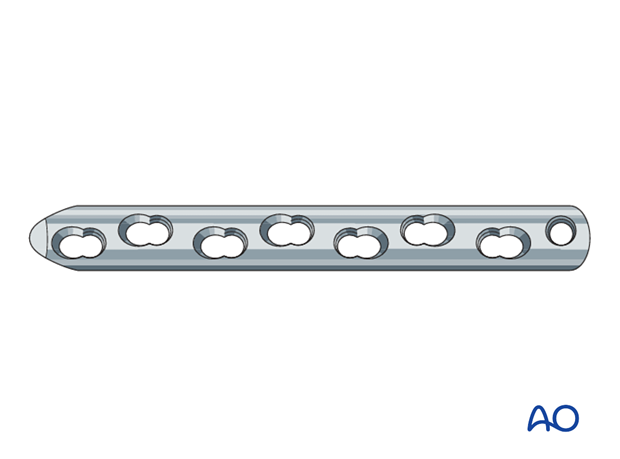
Plate preparation
Minimal plate bending is needed.
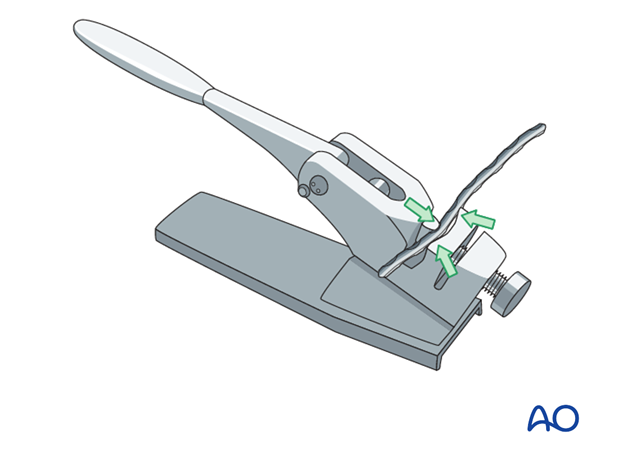
Plate application
With the bone-holding forceps in position, the appropriately sized plate is applied to the ventral aspect of the affected vertebrae.
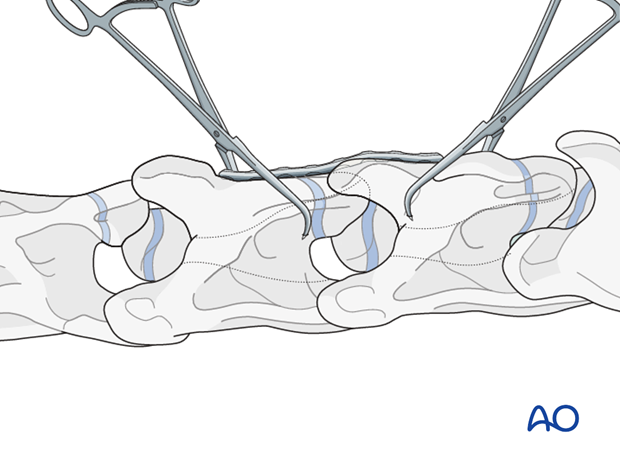
One cortex screw is inserted into each vertebra in load fashion. The correct length of the screws is determined with the help of fluoroscopy.
Note: Attention must be paid not to damage the spinal cord.
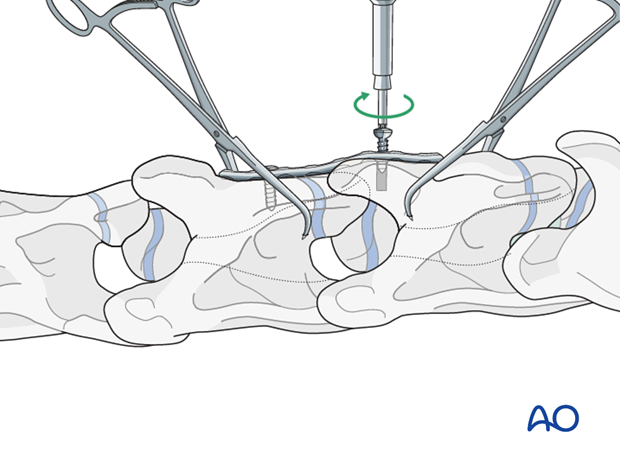
The remaining holes are filled with locking-head screws.
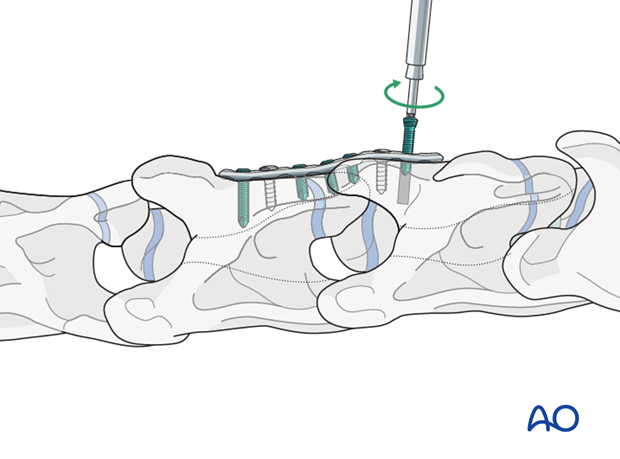
5. Closure
The muscles, subcutaneous tissue and the skin were closed in a continuous fashion. A close active drain can be placed at the level of the plate, exiting the skin near the incision and sutured to the skin.
A stent bandage is applied, and covered with an adhesive barrier drape to keep the incision clean and dry during recovery.
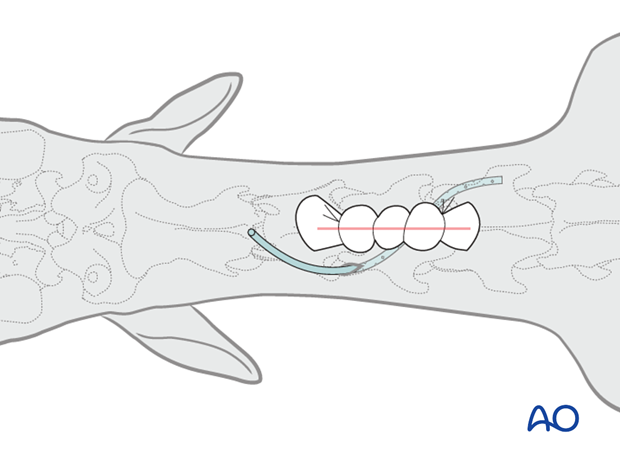
6. Case example
1.5-year-old Warmblood foal with instability of C3-C4-C5.
The instability is not visible on straight lateral radiographs.
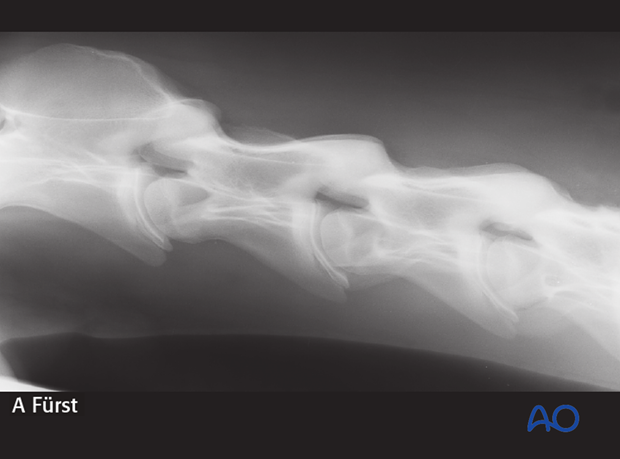
Preoperative myelography showing the instability of C3-C4-C5 (arrows).
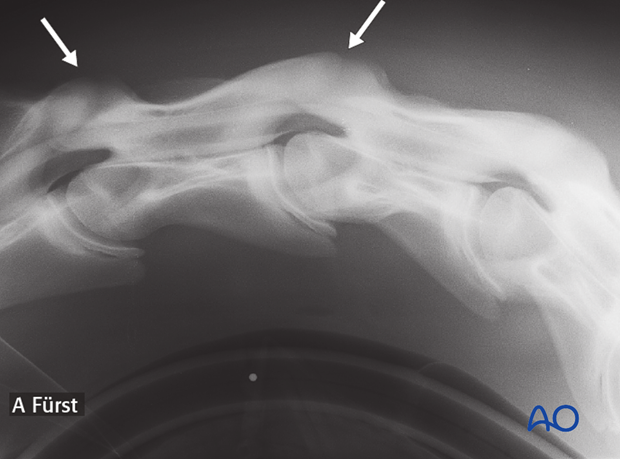
The instability was treated by performing an arthrodesis of C3-C4-C5. Intraoperative image showing screw insertion in lag fashion during fluoroscopic control.
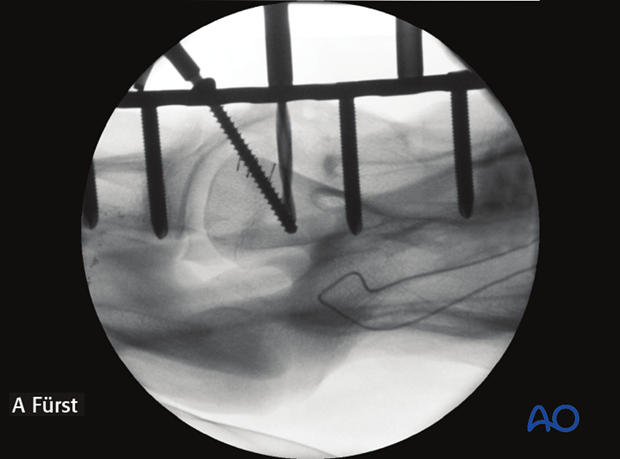
Postoperative radiograph showing stable fixation of C3-C4-C5.
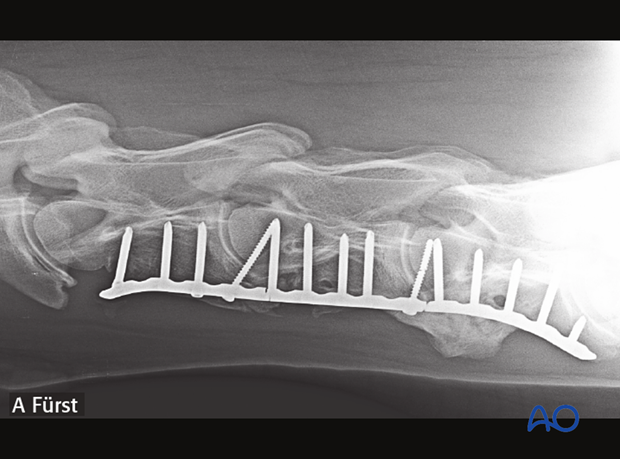
Follow up at 3 months.
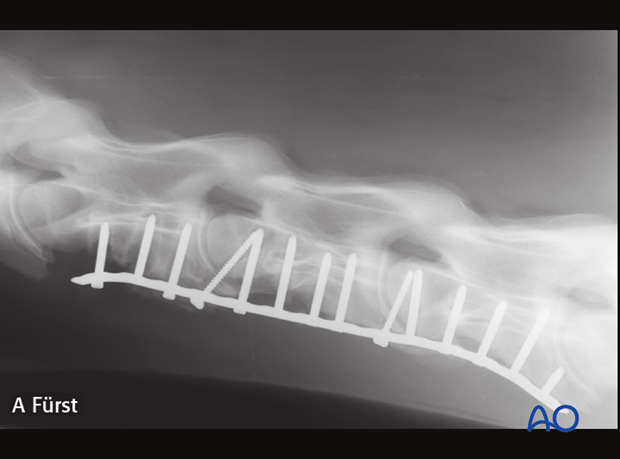
7. Aftercare
Following surgery, antibiotics and NSAIDs are routinely administered for 3 days. If indicated, they need to be continued.
Routinely follow up radiographs are taken immediately after surgery and after 2 and 4 months.
The rehabilitation protocol includes 2 months of stall confinement, followed by 1 month of hand-walking, and 2 months of progressive exercise.
Only when the ataxia has completely disappeared, the horse can return to training or other activities.
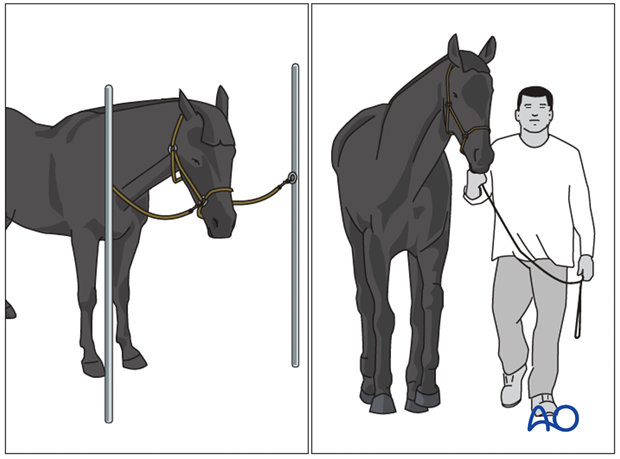
Implant removal
There is no need for implant removal, except in cases of implant loosening or surgical site infection.
